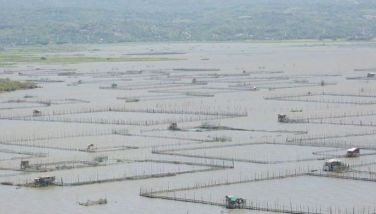Phl leads countries with highest obesity levels
MANILA, Philippines - While the world is focusing on global hunger and malnutrition, another ugly “monster” has emerged.
Obesity, a new form of malnutrition, has surfaced as an urgent challenge affecting several countries.
According to the United Nations Food and Agriculture Organization (FAO), the Philippines and India are among the developing countries with high levels of obesity and under-nutrition.
Obesity as a form of malnutrition often coexists with under-nutrition and results from shifts from local and traditional diets to foods that are increasingly heavy in salt, sugar and fat or processed foods.
The shift to a steady diet of processed food is due to the increasing cost of nutritious and natural food, the FAO said.
The global prevalence of combined overweight and obesity has risen in all regions, increasing among adults from 24 percent to 34 percent between 1980 and 2008.
The FAO said the prevalence of obesity among children has increased even faster, doubling from six percent to 12 percent over the same period.
“Overweight can co-occur with underweight within the same household, and is on the rise in countries with a high level of under-nutrition,” the FAO added in the report.
A 2011 survey by the Food and Nutrition Research Institute (FNRI) showed that 22.3 percent of Filipino adults are overweight and 6.1 percent are obese.
The prevalence of overweight Filipinos is expected to increase significantly by 2015.
“If this trend continues, it is highly likely that more will suffer from high-risk diseases that could lead to death,” the FNRI report said.
The factors leading to obesity in developing countries like the Philippines are numerous.
One leading factor is increasing world and domestic food prices, forcing increased purchase of unhealthy processed food over healthy and staple but expensive food.
Price increases threaten food security for poor households. For example, the 2011 increase in the price of basic grains meant that, in many developing countries, the cost of a kilogram of wheat doubled from about $.15 to $.30, a critical difference for people who live on little more than a dollar a day.
Food represents a substantial portion of the expenditure of poor households in poor countries.
For countries in Asia and Africa, expenditure on food was generally over 50 percent in the early 2000s, prior to the 2007-2008 crisis. In the Philippines, expenditures on food amount to 63 percent of a person’s income.
Biggest risk
Obesity is the biggest risk factor for type 2 diabetes mellitus. It likewise aggravates hypertension and raises blood cholesterol levels, which are major predisposing factors to the development of heart attacks and strokes.
In overweight men, the occurrence of impotence and sterility is higher than average while in obese women, there is a higher than average incidence of menstrual disorders, infertility and complicated pregnancies.
In both sexes, obesity increases the risk for gallbladder stones.
Obesity is likewise associated with cancers of the breast, uterus, cervix, ovary and gallbladder among women, and colon, rectum, prostate, pancreas and stomach among men.
- Latest
- Trending



























